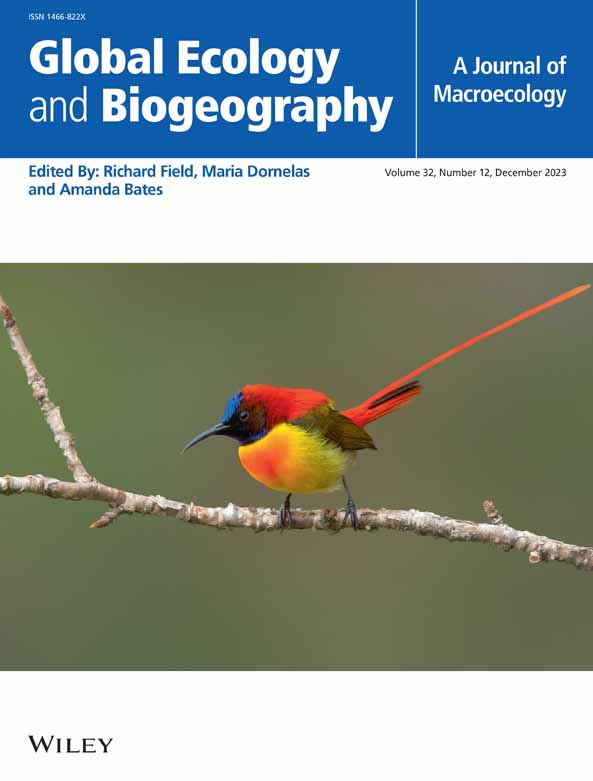Synchrony and Tail-Dependent Synchrony Have Different Effects on Stability of Terrestrial and Freshwater Communities
Abstract
Aim
Global change can impact the stability of biological communities by affecting species richness and synchrony. While most studies focus on terrestrial ecosystems, our research includes both terrestrial and aquatic realms. Previous works measure overall community synchrony as co-variation among co-occurring species, ignoring the tail dependence—when species fluctuate together at extreme abundance levels. We used community time-series data to test two hypotheses across realms: a positive relationship between diversity (richness) and stability, and a negative relationship between synchrony and stability. Additionally, we explored how tail-dependent synchrony contributes to variations in community stability.
Location
Global.
Time Period
1923–2020.
Major Taxa Studied
7 taxa across freshwater (fish, plants, invertebrates) and terrestrial (birds, plants, invertebrates, mammals) realms.
Methods
We synthesised 20+ years of species abundance/biomass data from 2668 communities across seven taxonomic groups. Using a variance-ratio approach and copula models, we measured overall and tail-dependent synchrony. Hierarchical linear mixed-effects models in a Bayesian framework were used to assess the effects of richness and both synchrony types on stability.
Results
We found a positive diversity–stability relationship in terrestrial but not in freshwater communities, with terrestrial stability being nearly three times higher. A negative synchrony –stability relationship was found in both realms. The best model explaining stability included realm differences, richness and both types of synchronies. For freshwater, only overall synchrony significantly impacted stability, while richness and both synchrony types were key predictors for terrestrial stability. Notably, the model overestimates terrestrial stability when tail-dependent synchrony is excluded.
Main Conclusions
Richness strongly enhanced terrestrial stability, offering the most extensive support for this relationship to date. In addition, tail-dependent synchrony provides key insights into stability differences across ecosystems. As extreme environmental events increase, incorporating tail-dependent synchrony in future stability studies is crucial.

 求助内容:
求助内容: 应助结果提醒方式:
应助结果提醒方式:


